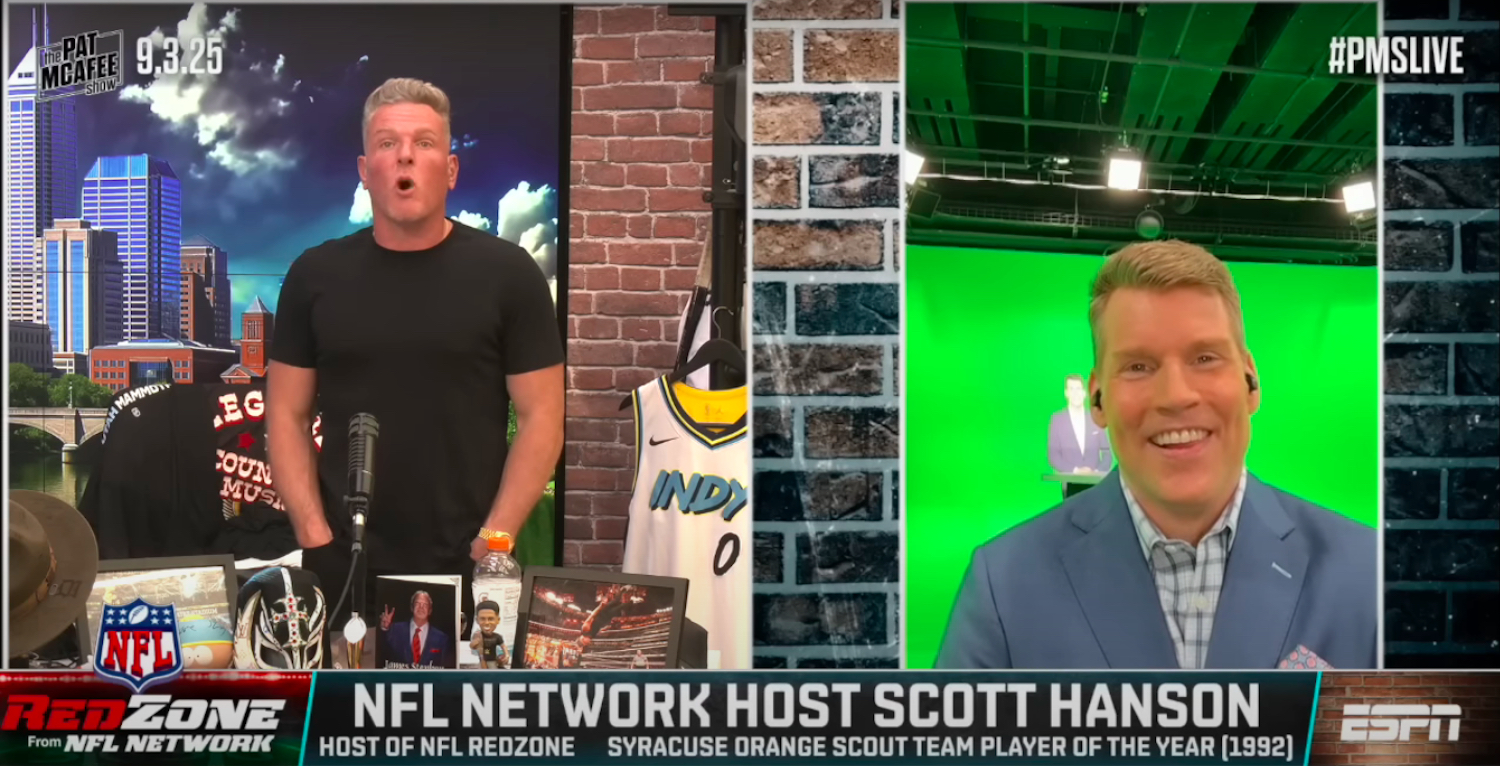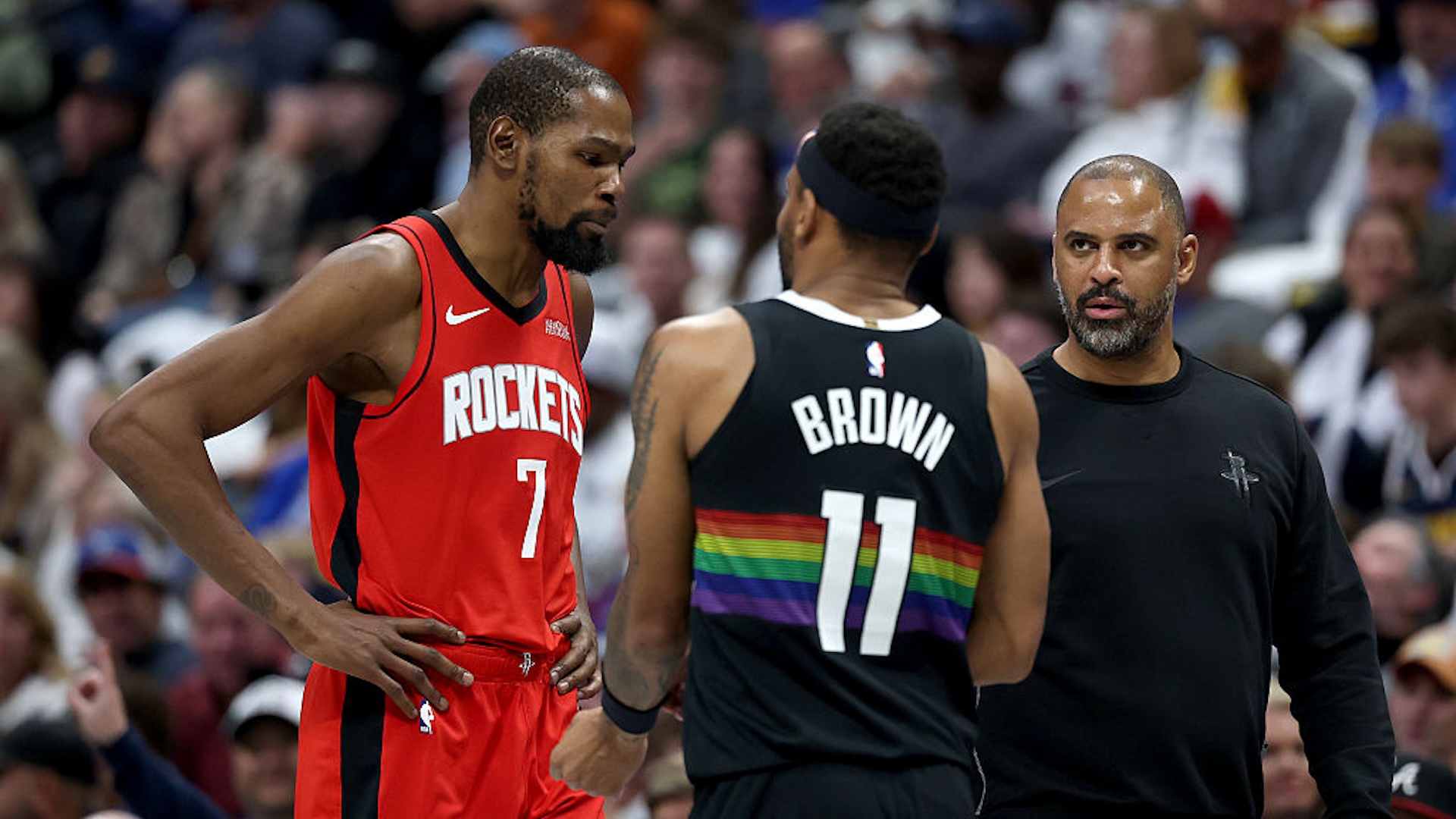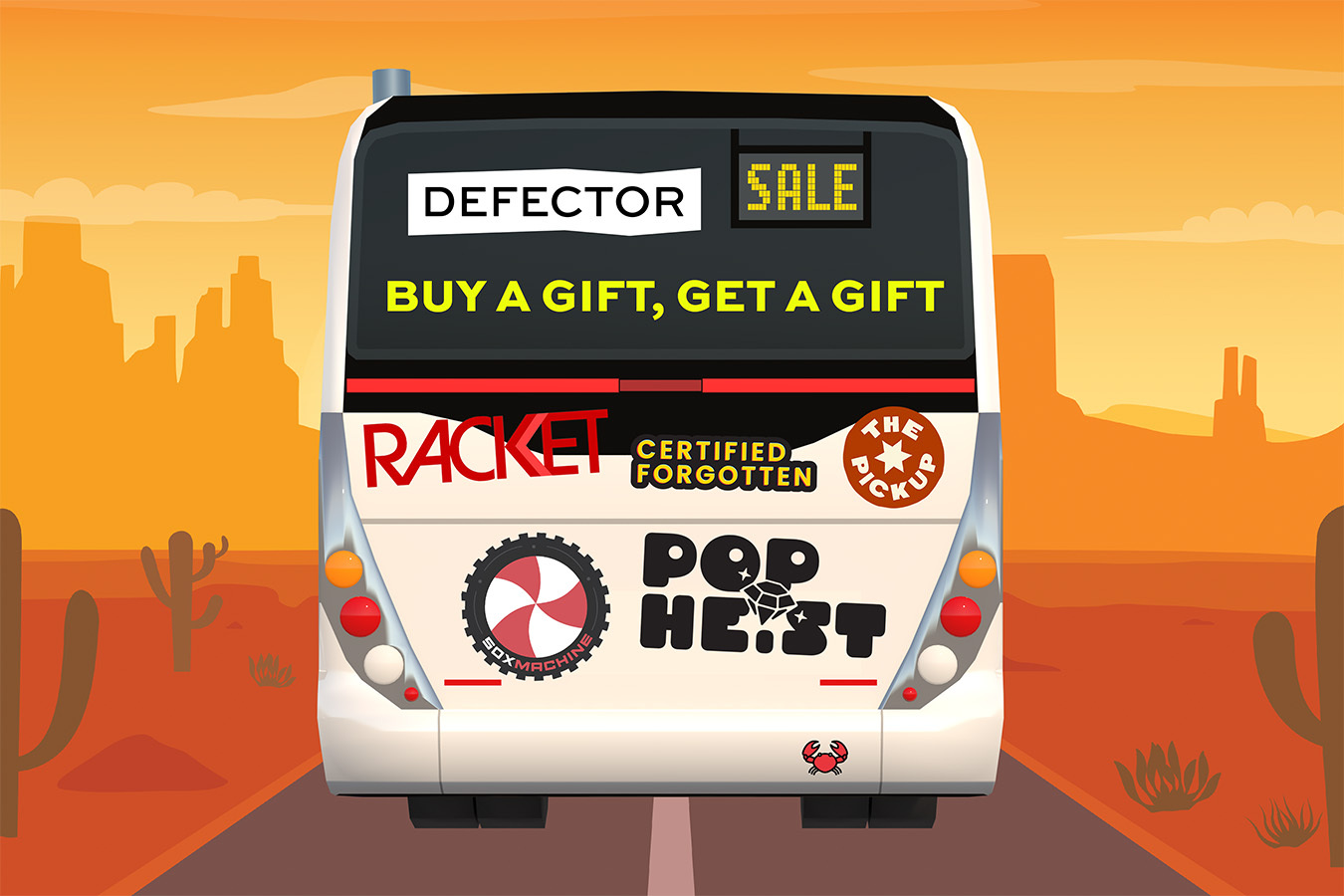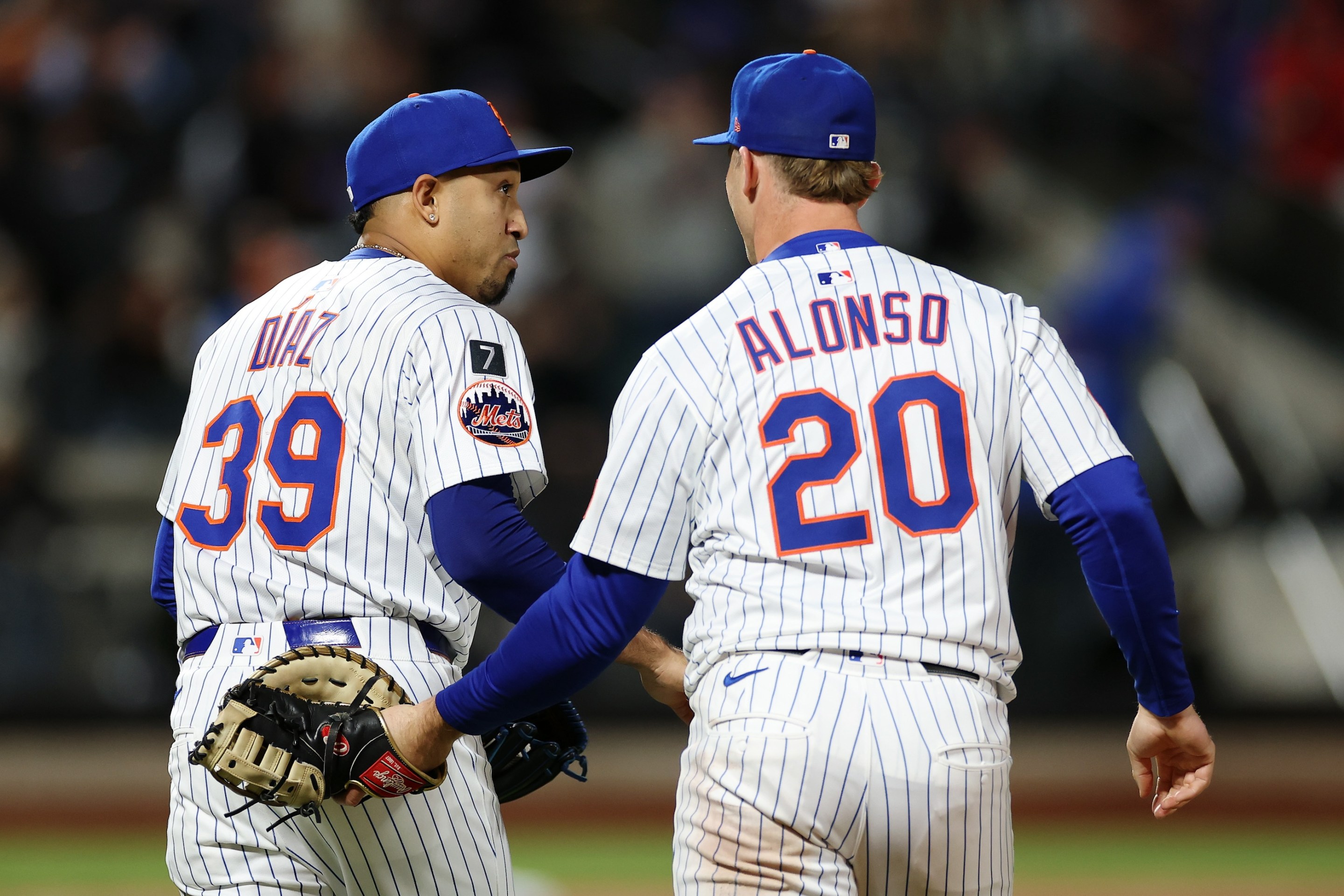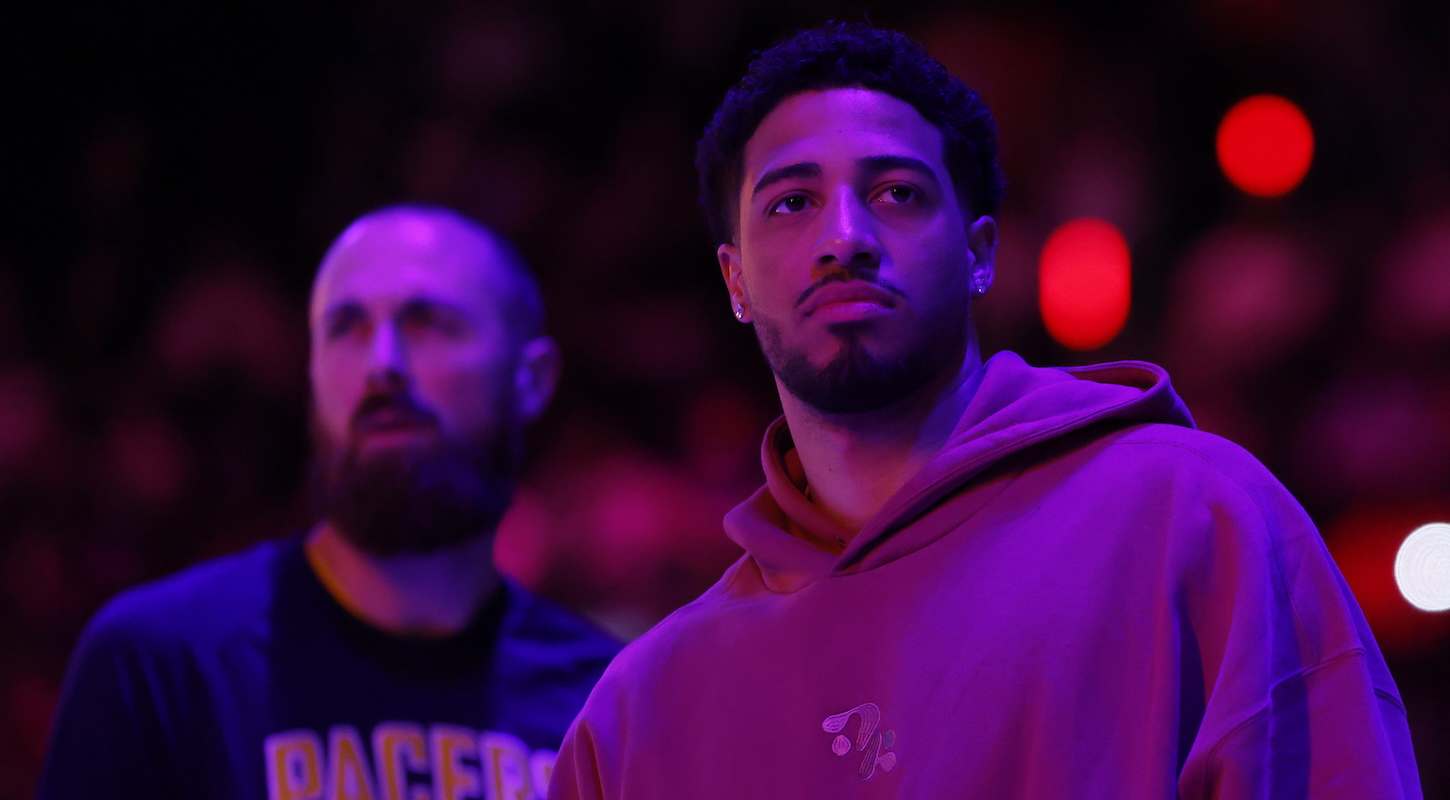This season, NFL RedZone will have commercials. It actually had commercials for a moment last year: During a Sunday slate of games this past December, the NFL tested out whether it could get away with them without a revolt. Despite complaints, the ads are here to stay.
RedZone host Scott Hanson mentioned this change during an interview on Wednesday's episode of The Pat McAfee Show. He noted that his introduction will no longer be "Seven hours of commercial-free football starts now," because that simply isn't true anymore. "The business folks handle the business, and I have no say over different elements that could or could not be in the show," Hanson told McAfee. Going forward, the host's intro will be: "Seven hours of RedZone football starts now."
This isn't just about a catchphrase. The draw of NFL RedZone is that the money you pay for the channel allows you to see the crucial moments of all NFL games as they happen—with no commercials. The subscription revenue is supposed to compensate for the lack of advertising. Now the viewer will pay the subscription and get commercials.
In practice, these commercials will not break away from the action. You might have experienced this before with a regular NFL game: The broadcast will split-screen so that the commercial can run, with audio, while the action continues muted in a smaller box. Usually this happens after a kickoff, a punt, or during some minor break in the action. Front Office Sports reported the details:
There will be four 15-second ads in the seven-hour edition of RedZone in Week 1, a source tells FOS. That could change later in the season.
There will not be full ad breaks, where the football action disappears from the screen.
“It’s an incredibly small ad load,” an NFL spokesperson told Front Office Sports.
While ads are playing, viewers will hear the audio of the ads, but the other box will show NFL RedZone.
The size of the NFL's loads is irrelevant. Again, one major selling point of this service, which people pay for, is that the subscriber gets to watch the football without any advertising. You see that line in the first quoted paragraph, about how the quantity of ads could change later in the season? I bet you can guess what'll happen later in the season.
One common but misguided response to this news has been concluding that the NFL's deal with ESPN, announced in August, was the impetus for these changes to RedZone. Look, there are plenty of reasons to be mad at ESPN. For example, look at who was interviewing Hanson in the first place; that guy has a three-hour show five times a week. Be mad about that. But to get back to the point, the deal between the two companies hasn't been finalized, and ESPN doesn't have creative control over RedZone—it's still part of NFL Network. As has been established on many occasions, the NFL can be greedy all on its own. If the league tested out these ads last season, this plan to juice revenue was already in the works. Nonetheless, it's embarrassing that ESPN's biggest personalities are running damage control for the move.
"I don’t think anybody is upset about the commercials," McAfee said at the end of his interview with Hanson. "It’s an easy thing to tweet about and post about, but I don’t think anybody is turning it off because of commercials, and the NFL knows that." For the record, ESPN signed McAfee to a five-year deal worth $85 million. Fuck off!
Then ESPN insider Adam Schefter, who would be the biggest kiss-ass in NFL media if there wasn't such stiff competition, jumped in to defend the commercials. Perhaps the spirit of Darren Rovell possessed him to break down the ratio in this tone:
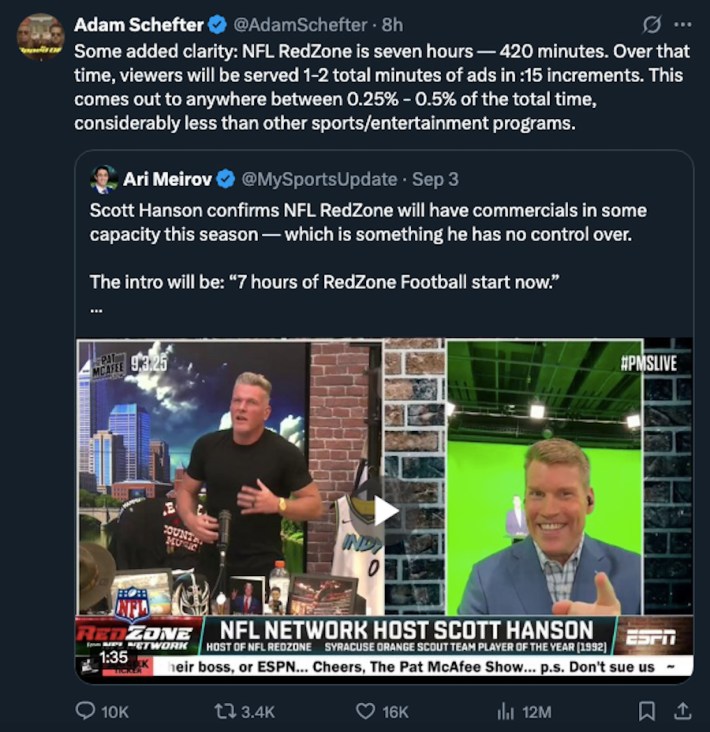
Well, when you put it that way: It's still adding commercials to the commercial-free service. Someone should put just a couple drops of piss in Adam's coffee.
The widespread disdain here is reminiscent of when Nike and Fanatics totally botched their MLB uniform rollout, only to revert the changes by the start of this season. People can be stupid, but they're not that stupid. They have been on this greedy Earth long enough to know that this doesn't end at a few 15-second spots. It's infuriating to be told it's not a big deal that a product is getting shittier while the price remains the same.
